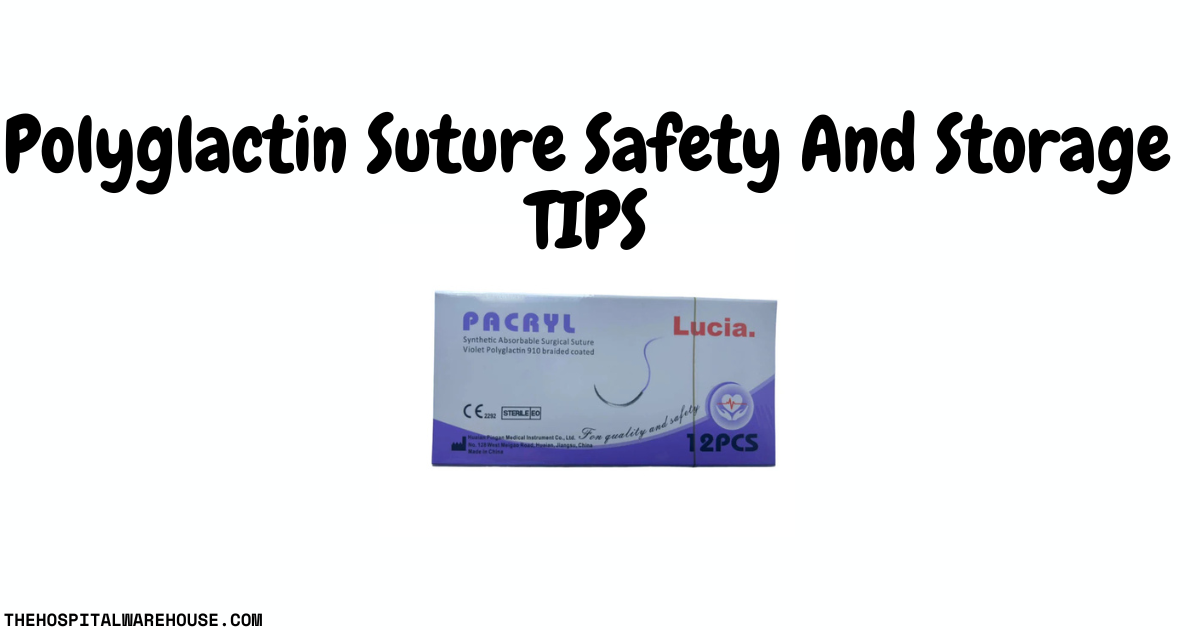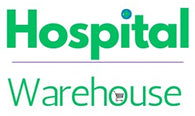
Polyglactin Suture Safety: Sterilization, Handling, and Storage Tips
When it comes to surgical procedures, every detail matters. From the surgeon's expertise to the quality of medical supplies, patient safety depends on maintaining the highest standards throughout the entire process. Among the critical components of successful surgery are the sutures used to close wounds and promote healing. Polyglactin sutures, known for their absorbable properties and excellent biocompatibility, require specific handling protocols to ensure they maintain their integrity and sterility.
Proper handling of sutures isn't just a recommendation; it's a fundamental requirement for preventing complications, reducing infection rates, and ensuring optimal patient outcomes. When healthcare facilities cut corners on suture handling protocols, they risk exposing patients to serious complications that could have been easily prevented.
Understanding Polyglactin Suture Sterilization
Polyglactin sutures undergo rigorous sterilization processes before they reach hospital operating rooms. Manufacturers typically use gamma radiation or ethylene oxide sterilization methods to eliminate all microorganisms, including bacteria, viruses, and spores. These processes are carefully controlled and validated to ensure complete sterility while preserving the suture's mechanical properties.
The sterilization process occurs in controlled environments where temperature, humidity, and exposure times are precisely monitored. Gamma radiation, the most common method, penetrates the packaging and suture material without leaving any residue, making it ideal for medical devices. Ethylene oxide sterilization, while effective, requires longer processing times and careful handling to ensure all gas residues are removed.
Hospitals should exclusively purchase pre-sterilized suture packs from trusted, certified suppliers. Attempting to sterilize sutures in-house using standard hospital autoclaves can compromise the suture material's integrity, potentially leading to premature degradation or reduced tensile strength. Pre-sterilized packs come with certificates of sterilization and clear labeling indicating the sterilization method used and validation testing performed.
Proper Handling Techniques for Healthcare Workers
Once polyglactin sutures enter the operating room, maintaining their sterility becomes the responsibility of the surgical team. Contamination can occur at multiple points during the handling process, making it essential for all team members to follow strict protocols.
Before opening suture packages, surgical staff should inspect the packaging for any signs of damage, moisture, or contamination. Torn packages, discolored areas, or any compromise to the packaging integrity means the sutures should be discarded immediately. The packaging serves as the primary barrier protecting the sterile sutures inside.
During surgery, sutures should be handled with sterile instruments only. Direct contact with gloved hands, while sometimes necessary, should be minimized to reduce the risk of contamination. When cutting sutures, use sharp, sterile scissors to prevent fraying or damage to the suture material. Dull instruments can cause the polyglactin fibers to separate or fray, potentially affecting the suture's holding strength.
The surgical field must remain sterile throughout the procedure. If sutures come into contact with non-sterile surfaces, blood clots, or contaminated instruments, they should be discarded. While this might seem wasteful, the cost of replacing a contaminated suture is minimal compared to the potential costs associated with surgical site infections.
Storage Guidelines for Optimal Suture Quality
Proper storage of polyglactin sutures is crucial for maintaining their quality and extending their shelf life. These sutures are sensitive to environmental conditions, and improper storage can lead to premature degradation or reduced performance.
Temperature control is paramount when storing polyglactin sutures. The ideal storage temperature ranges between 15°C and 25°C (59°F to 77°F). Temperatures above 30°C can cause the suture material to become brittle or lose its tensile strength prematurely. Extreme cold can also affect the suture's handling characteristics, making it more difficult to work with during surgery.
Humidity levels should be maintained between 30% and 70% relative humidity. High humidity can promote bacterial growth and potentially compromise packaging integrity, while very low humidity can cause static electricity buildup, making sutures difficult to handle.
Storage areas should be clean, dry, and protected from direct sunlight. UV radiation can degrade polyglactin material over time, reducing its effectiveness. Sutures should be stored in their original packaging until ready for use, and storage areas should have adequate ventilation to prevent moisture buildup.
Regular monitoring of expiry dates is essential. Polyglactin sutures typically have shelf lives of 3-5 years when stored properly, but this can vary by manufacturer. Implement a first-in, first-out rotation system to ensure older stock is used before newer supplies. Expired sutures should never be used, as their mechanical properties may be compromised.
Understanding the Risks of Poor Handling
When polyglactin sutures are not handled properly, the consequences can be severe for both patients and healthcare facilities. Poor handling practices create multiple risk factors that can compromise surgical outcomes and patient safety.
Surgical site infections represent one of the most serious complications arising from contaminated sutures. These infections can extend hospital stays, require additional treatments, and in severe cases, lead to life-threatening complications. The financial burden on healthcare systems is substantial, with infected surgical sites costing thousands of dollars more to treat than uncomplicated procedures.
Compromised suture integrity is another significant concern. When polyglactin sutures are exposed to improper storage conditions or rough handling, their tensile strength can be reduced. This may result in suture breakage during surgery, requiring additional sutures and potentially prolonging the procedure. In some cases, weakened sutures may fail after surgery, leading to wound dehiscence or the need for revision procedures.
Temperature fluctuations can accelerate the degradation of polyglactin material, causing sutures to absorb more quickly than intended. This unpredictable absorption rate can affect wound healing timelines and may require surgeons to use alternative suture materials or techniques.
Cross-contamination in storage areas can spread pathogens to multiple suture packages, potentially affecting numerous patients. This scenario can lead to outbreak investigations, facility closures, and significant reputational damage to healthcare institutions.
Best Practices for Kenyan Hospitals
Kenyan healthcare facilities face unique challenges in maintaining proper suture handling protocols, particularly in regions with varying climate conditions and infrastructure limitations. Developing robust procurement and handling policies specific to the local environment is essential for ensuring consistent patient safety.
Procurement policies should prioritize working with established suppliers who can provide documentation of proper storage and transportation conditions. Given Kenya's diverse climate zones, suppliers should demonstrate their ability to maintain temperature-controlled storage and transportation, especially during the hot, humid conditions common in coastal regions or the dry heat of northern areas.
Staff training programs should be comprehensive and regularly updated. All personnel involved in suture handling, from procurement staff to operating room technicians, should understand the importance of proper protocols. Training should include hands-on demonstrations of proper inspection techniques, storage procedures, and contamination prevention methods.
Quality assurance protocols should include regular audits of storage areas, temperature and humidity monitoring, and documentation of handling procedures. Establish clear chains of responsibility for suture quality, from receipt to use in surgery. This accountability helps ensure that problems are identified and addressed quickly.
Inventory management systems should track expiry dates, storage conditions, and usage patterns. This data helps facilities optimize their procurement cycles and reduce waste from expired products. Consider implementing barcode or RFID tracking systems to improve accuracy and efficiency in larger facilities.
Climate considerations are particularly important in Kenya's varied environments. Facilities in coastal areas need robust humidity control systems, while those in arid regions must focus on preventing excessive dryness. Backup power systems for storage areas ensure that temperature and humidity controls remain functional during power outages.
Regular supplier audits help ensure that vendors maintain proper standards throughout their supply chains. This is particularly important when working with international suppliers who may not be familiar with Kenya's specific logistical challenges.
Ensuring Excellence in Patient Care
The proper handling of polyglactin sutures represents just one aspect of comprehensive patient safety protocols, but it's a critical one that directly impacts surgical outcomes. By implementing robust sterilization verification, handling procedures, and storage guidelines, healthcare facilities can significantly reduce the risk of complications while improving overall surgical success rates.
Healthcare workers at every level, from procurement specialists to operating room staff, play vital roles in maintaining suture quality. Regular training, clear protocols, and consistent monitoring create a culture of safety that benefits both patients and healthcare providers.
Investment in proper suture handling protocols pays dividends in reduced complication rates, shorter hospital stays, and improved patient satisfaction. More importantly, these practices uphold the fundamental medical principle of "do no harm" by ensuring that every surgical intervention is performed with the highest quality materials and techniques.
For healthcare facilities looking to elevate their standards, partnering with reliable suppliers who understand the importance of quality and can provide consistent, high-grade products is essential. The right supplier relationships form the foundation of excellent patient care.

Leave a comment